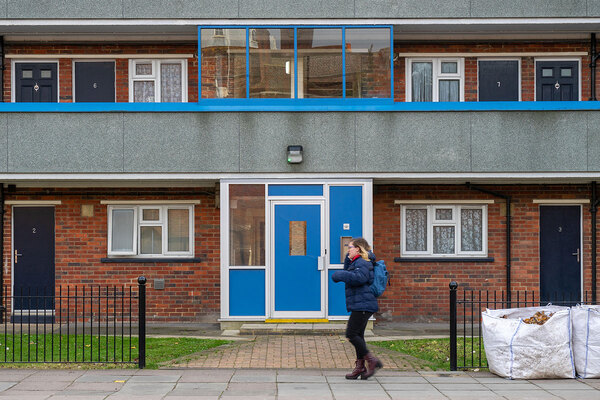You are viewing 1 of your 1 free articles

How housing associations should deal with mistakes made by contractors
Claims relating to design defects can be the most costly for social landlords and dealing with them requires a clear strategy, write Lee Russell and Michael Wells
Mixed-tenure new build developments can trigger a number of different legal claims from leaseholders and tenants, but those relating to design defects can be the most costly for social landlords.
These defects can range from the omission of guttering or damp-proof membranes through to more serious problems affecting heating systems, water penetration, roofs and external walls.
If these issues render a property unfit for habitation, claims can be brought against the property owner and this is a risk that may increase further following the introduction of the Homes (Fitness for Human Habitation) Act 2018 that will begin to affect some tenancies from 20 March 2019.
It is usually the teams on the ground that are the first to hear about defects.
Housing officers and/or repairs and maintenance staff are tasked with fixing the problem as quickly as possible to avoid further complaints and the risk of legal claims.
However, in some cases, this approach means that opportunities are being missed to pass the problem up the chain and recover repair costs from contractors, designers or insurers.
Of course, not all property defects are the responsibility of the landlord.
However, those that are, particularly design defects, could be a result of underlying issues that can be traced back to a contractor’s negligence during construction, in which case landlords can seek to claim for breach of contract.
Although there may be tell-tale signs that defects have been caused by contractors or those involved in the initial design or construction, these aren’t always spotted by property owners, so they are unaware of their legal options.
Part of the problem is that information regarding defects isn’t shared as effectively or as widely as it could be, especially across larger teams operating from different locations.
Sometimes people on the ground simply don’t know that certain issues should be escalated and investigated further before remedial works begin.
“A big warning sign is if there are multiple reports of a similar defect”
To address this, landlords need to raise awareness internally of the issues that could signal that a contractor or designer is at fault and improve communication channels.
A big warning sign is if there are multiple reports of a similar defect.
This is a strong indicator that there may be an underlying issue, most likely a latent defect caused by a contractor’s negligence or other breach of contract.
For example, if there are several complaints about a heating system, this would suggest that there may be a fault in the system that could be a defect under the building contract.
Similarly, if tenants’ and/or leaseholders’ complaints indicate a widespread defect rather than an isolated issue, it is more likely to have been caused by a contractor or a designer, particularly in newly constructed developments.
If signals point to a contractor being at fault, there are a number of steps that landlords should take to bring a successful claim.
First, they must act quickly and gather evidence of the defects, including photos and independent expert reports.
If the landlord built the block rather than purchased it, they will usually have to notify the contractor of any defects within one year after practical completion.
This is known as the defect rectification period. However, if a defect is discovered after this period, this does not automatically mean that the contractor is not responsible.
It usually means that the primary obligation to ask the contractor to fix the defects falls away.
In fact, a claim for breach of contract can be made up to six or 12 years from the date of practical completion (depending on how the contract is executed) and the Latent Damage Act can extend this limit in certain circumstances.
As such, even if a defect is discovered a number of years after practical completion, the contractor or designer could still be liable.
It is usually easier to recover losses when the contractor/designer is still actively involved in the development rather than making a claim once the works have been completed.
It is therefore beneficial to pick up defects early, particularly when these are discovered by an employer’s agent or clerk of works during the construction phase.
Most building owners will have defect insurance policies after new builds or refurbishments, commonly from the National House Building Council, Premier Guarantee and Building Life Plans.
These are usually split into two types:
- Initial cover for the first one or two years where the contractor has an obligation to undertake remedial works
- Additional cover for the next eight or nine years (after the initial cover) where the insurer will be responsible for structural defects
In a nutshell, that means most policies are limited to around 10 years from practical completion, after which point it will be too late to make a claim.
Claims against a contractor/designer and an insurer are not mutually exclusive and can be run simultaneously to the landlord’s advantage, albeit damages can only be recovered from one party.
Better communication and knowledge-sharing across all teams involved in managing properties could prove vital for social landlords.
Approaching legal claims about property defects or repairing issues more forensically will help to establish the root cause of a defect and whether the contractor is at fault.
While this may not avoid a landlord’s liability to put things right, it should help limit the costs incurred when dealing with any necessary works and legal claims.
If a landlord decides to make a claim against contractor, designer or insurer, timing is critical. The earlier these issues are identified, the easier it is for landlords to recover their repair costs and potential losses.
Lee Russell, solicitor, housing management team, Devonshires; and Michael Wells, construction and engineering team, Devonshires








